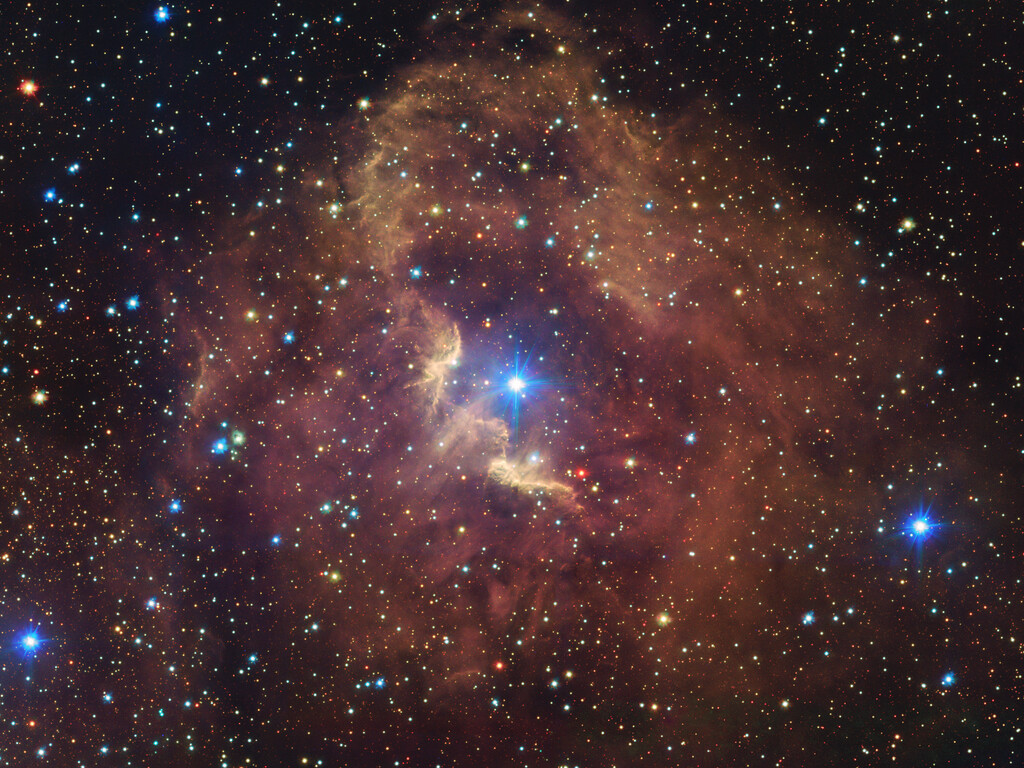This stunning nebula will be lost to future astronomers forever

This breathtaking image captured by the VLT Survey Telescope shows the Gum 41 nebula - an intriguing stellar nursery located in the southern sky, within the constellation Centaurus. The image presents a captivating view of the nebula, showcasing its symmetric beauty as a Strömgren sphere - a shell of hydrogen gas atoms glowing in rosy hues due to the radiation of the dazzling central star, called HD 100099, against a vibrant tapestry of stars.
What seems to be a single bright object in the heart of the Gum 41 nebula is, in fact, a closely orbiting pair of young, massive stars. Their tight embrace makes them indistinguishable at this scale, creating a singularly bright point in the image.
The nebula hosts numerous stellar pairs similar to this, including HD 99944, a luminous object gracing the nebula's lower right periphery. Yet, this stellar romance is destined for a tragic ending. Stars of such magnitude burn brightly but briefly, living for only a few million years before extinguishing. Eventually, the vibrant glow of Gum 41 will fade as its stars die out, leaving the nebula to disappear from the cosmic stage forever.
Gum 41 is part of a much larger region, affectionately called the Running Chicken Nebula. Whether this nebula forms the foot or the head of the chicken is surprisingly controversial.
Astronomers study such nebulae to understand the lifecycle of stars, from their birth in dense gas clouds to their eventual demise, contributing to the ever-evolving picture of our universe's complex and beautiful machinery.
The Gum 41 nebula takes up most of this image, brought to you by the VLT Survey Telescope 🤩 Sadly, Gum 41 will fade into transparency one day, forever lost to future astronomers 😢 Discover why here https://t.co/a9AuEqCSEw 📷 ESO/VPHAS+ team. Ack. CASU pic.twitter.com/4bnnmAzE6L
— ESO (@ESO) April 8, 2024
- READ MORE ON:
- VLT Survey Telescope
- Gum 41 Nebula
- Running Chicken Nebula










